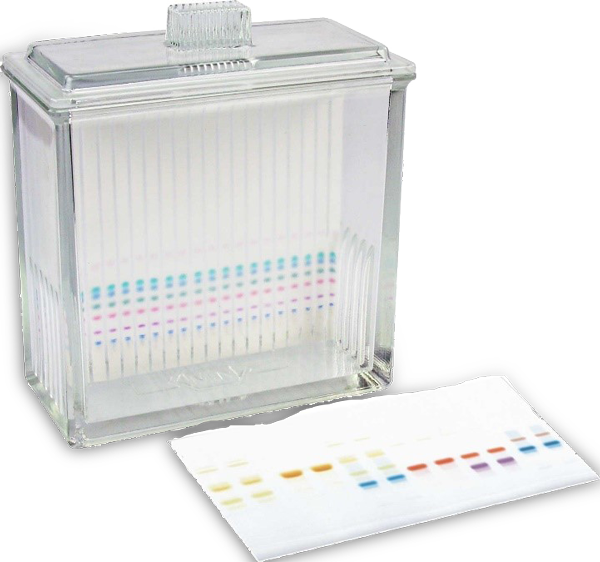TLC-Thin Layer Chromatography Plates
The Rapid, Efficient, Low-Cost, Technique for Cannabinoid Identification and Mobile Phase Method Development
TLC has been used to identify cannabinoids for many years. It has proven itself as a reproducible, simple, and low-cost method to identify cannabinoids and more recently, as an efficient, time-saving method to develop the optimal solvent system choice for other cannabis chromatographic separations.
Additionally, preparative TLC can permit a user to isolate and collect larger fractions, without requiring more expensive and involved flash, column, or HPLC purification methods. HPTLC provides additional capabilities for analyzing crude samples.
HPTLC can be quantitative and permits easy separation and detection of colored compounds, parallel analysis of several samples on the same plate, and facilitates proper selection of solvent system components for further reverse phase analysis of the extract.

TLC Plates – Normal-Phase
| Sorbtech Normal Phase TLC Selection Guide | |||
|---|---|---|---|
| TLC Plate Type | Description | Features | Types Available |
| Silica Gel High Definition Layer (HD) TLC plates feature an abrasion-resistant surface with outstanding dyeability. |
|
✓ Glass - Plastic - Aluminum ✓ Indicator ✓ w/o Indicator |
|
| Silica Gel Extra Hard Layer (XHL) plates feature a newly developed binder system, resulting in an outstanding hardness of the silica layer. |
|
✓ Glass - Plastic - Aluminum ✓ Indicator ✓ w/o Indicator |
|
| This is a soft layer plate that uses Gypsum as its binding agent. |
|
✓ Glass ✓ Plastic ✓ Aluminum ✓ Indicator ✓ w/o Indicator |
|
| Outstanding wettability for precise colorization results, even with 100% aqueous detection reagents. |
|
- Glass - Plastic ✓ Aluminum ✓ Indicator ✓ w/o Indicator |
|
| These plates contain a concentration zone serving as a "quick application zone", which allows a quantitative evaluation of chromatograms. |
|
✓ Glass - Plastic ✓ Aluminum ✓ Indicator ✓ w/o Indicator |
|
| Contains a specific pore volume of 0.75 ml/g and particle size of 2-10 µm. |
|
✓ Glass - Plastic ✓ Aluminum ✓ Indicator ✓ w/o Indicator |
|
| Aluminum Oxide layer with a pH of about 6-8. Recommended when separation involves relatively nonpolar analytes. |
|
✓ Glass ✓ Plastic ✓ Aluminum ✓ Indicator ✓ w/o Indicator |
|
HPTLC Plates – Reverse and Normal Phase
| HPTLC Plate Type | Description | Features |
|---|---|---|
| Nano-Silica HD HPTLC Plates | Contains a specific pore volume of 0.75 ml/g and particle size of 2-10 µm. | Narrow fractionation of silica particles allows sharper separations, shorter developing times, shorter migration distances, and increased detection sensitivity |
| C18-W HPTLC Plates | Normal Phase or Reversed-Phase separation modes with eluents from anhydrous solvents to mixtures with high concentrations of water. | Separation of very non-polar and highly polar substances using aqueous solvent systems. Use to determine solvent system composition for downstream HPLC analysis. Provides additional selectivity’s as compared to Silica Gel plates. Very fast migration times. |
| C18-100 HPTLC Plates | Octadecyl-Modified Nano Silica Layers, Complete (100 %) octadecyl modification, carbon content 14%. | Reversed-phase separation mode with eluents from anhydrous solvents to mixtures with up to 20% water. Use for Alkaloids, amino acids, barbiturates, polycyclic aromatic hydrocarbons (PAH), drugs, peptides, flavonoids, phenols, indole derivatives, steroids. |
| C18-50 HPTLC Plates | Octadecyl-Modified Nano Silica Layers; Partial (50%) octadecyl modification, carbon content 7.5% | Reversed-phase separation mode with eluents from anhydrous solvents to mixtures up to 60% of water Use for· Alkaloids, amino acids, barbiturates, polycyclic aromatic hydrocarbons (PAH), drugs, peptides, flavonoids, phenols, indole derivatives, steroids. The 50% carbon load is less retentive than the C18-100. |
| Amino HPTLC Plates | Aminopropyl modification, carbon content 3.5% | Moderately polar can be used in both normal and reversed-phase modes. Use to separate hydrophilic or charged samples, vitamins, sugars, steroids, purine derivatives, xanthine, phenols, nucleotides, and pesticides. |
| Cyano HPTLC Plates | Cyanopropyl modification, carbon content 5.5% | Moderately polar can be used in both normal and reversed-phase modes. Use to separate hydrophilic or charged samples. Steroid hormones, phenols, preservatives. |
| Diol HPTLC Plates | Diol modification, carbon content 5.5% | Moderately polar can be used in both normal and reversed-phase modes. Steroids, pesticides, and plant constituents, less sensitive than silica to the water environment. |


